Fleas are one of the most medically important groups of arthropods, probably only second to ticks and mosquitoes. They are vectors for many disease-causing agents, including those that cause plague, feline rickettsiae, and endemic typhus, and can serve as intermediate hosts for a few tapeworms. The Oriental rat flea, Xenopsylla cheopis, was a driving force in the spread of the Black Death pandemic in the 1300s. Today, X. cheopis continues to keep the bacterium circulating in rodent populations. Fleas are not commonly made as toys, but in 1998 Safari Ltd. produced one in their Smithsonian Insects collection that were featured in a traveling insect exhibition hosted by the Smithsonian Museum of Natural History. This was probably the second flea figure produced, following the cat flea made by Play Visions in 1996. Since then, fleas have been made by Innovative Kids (whose mini model was certainly influenced by this Safari figure), Sbabam, and Kaiyodo. They have also been made by companies that produce models for the veterinary community.
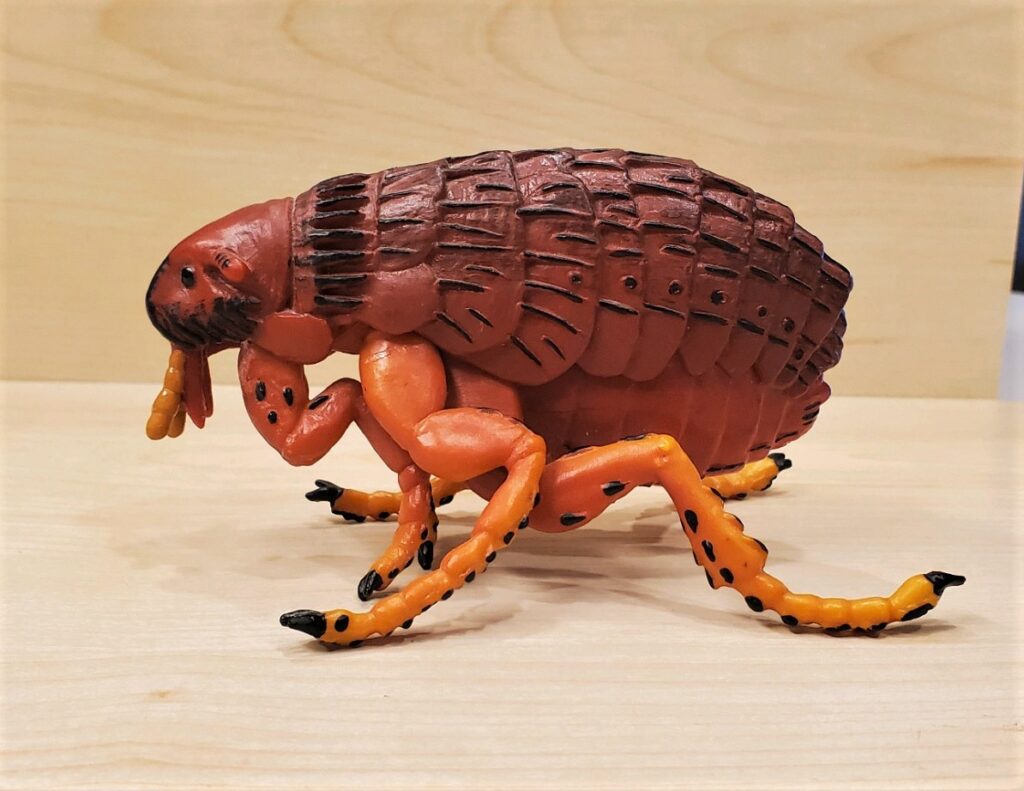
Safari only marketed this figure as a flea, but the presence of pronotal and genal combs (the bristles behind the head and the ‘Groucho Marx moustache’, respectively) support the identification of a flea in the genus Ctenocephalides, which includes the common cat and dog fleas. Most fleas made as toys appear to represent Ctenocephalides, except for the human flea (Pulex irritans) produced by Kaiyodo in 2015 for the Capsule Q Museum Line.
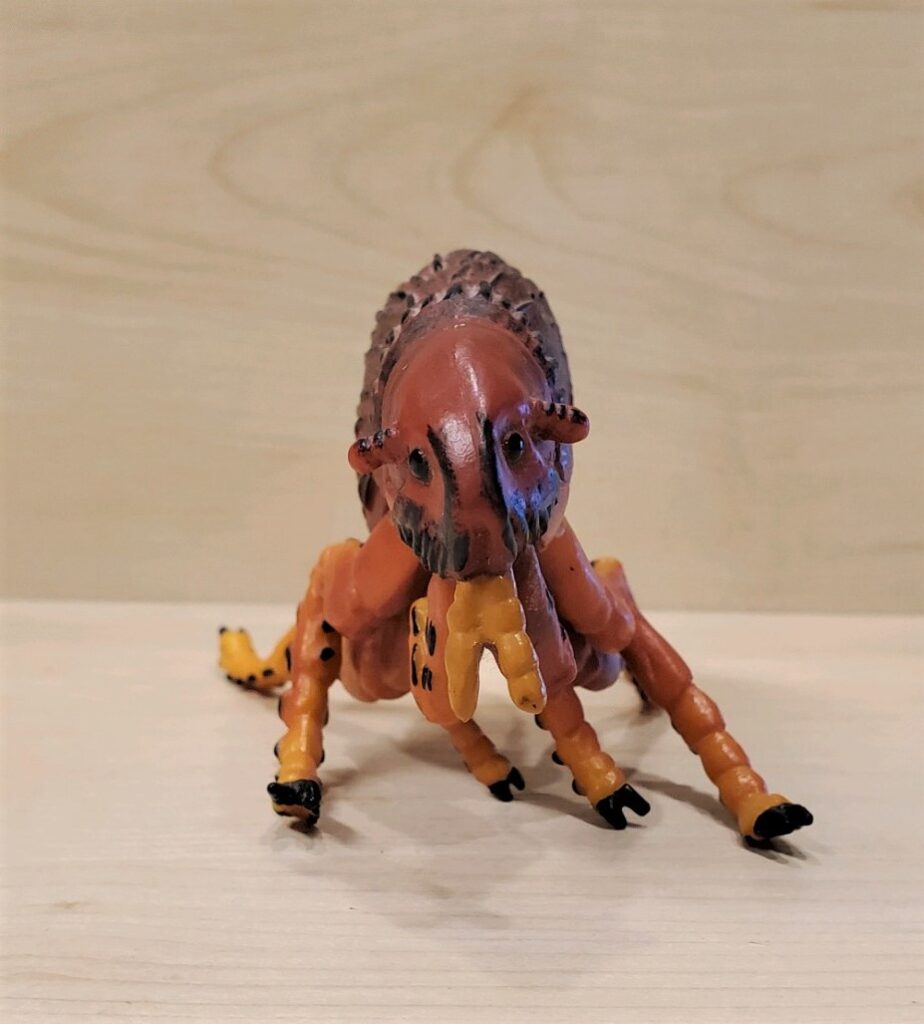
Today’s flea is a large figure. Most figures in the Smithsonian Insects line are in the 2:1 scale, but a flea at that size still wouldn’t be appreciated as a toy. The body length of this toy is 11.5 cm, which would make it 38:1-28:1 in scale for a member of the genus Ctenocephalides.
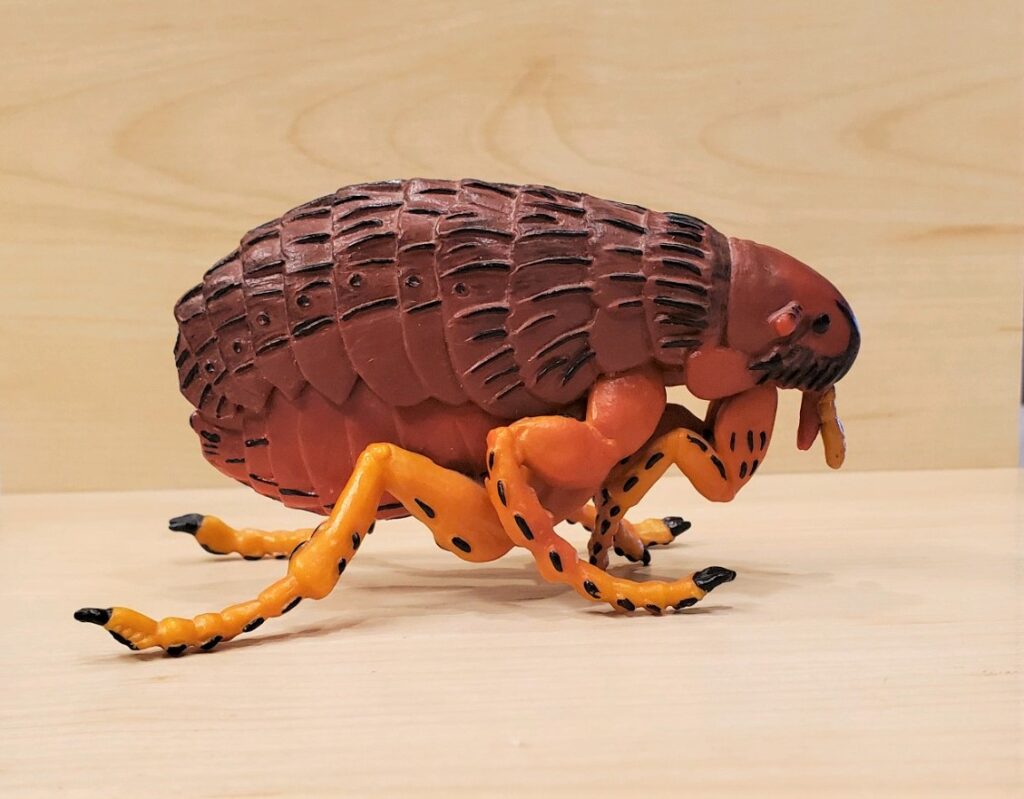
A figure of a flea at this size allows for a lot of nuances to be captured, and Safari did just that; the eyes, antennae, pronotal and genal combs, ocular bristle, and mouthparts (palps, epipharynx, and lacinia) are all present. Fleas are laterally compressed, so they can navigate easily between hair and feathers of their hosts, and this figure is a bit too broad, but that is probably to prevent breakage during play. Still, it’s not that exaggerated compared to other, smaller flea toys (Play Visions, for example). The color of the flea is authentic for what they look like, particularly in mounted specimens (live fleas are usually a bit darker). Individual bristles and spiracles are sculpted and painted as well.
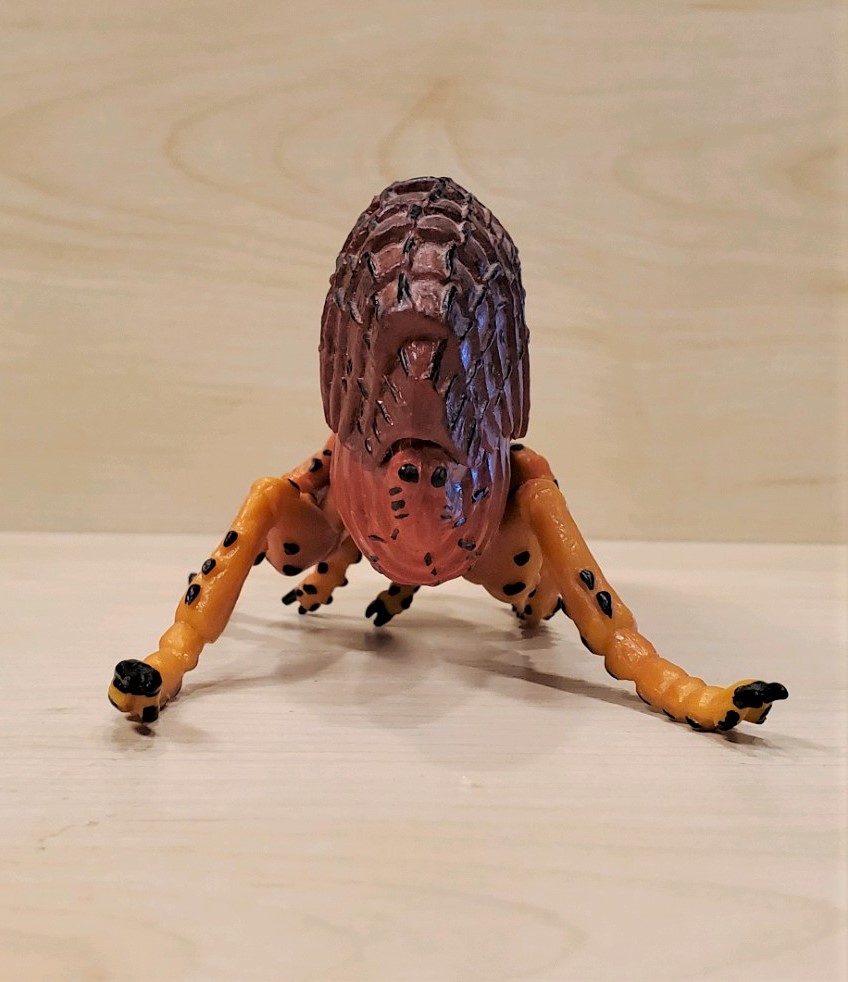
If you are a collector of interesting taxa, you’d be hopping mad not to want to add this to your menagerie! Being a professional parasitologist and, to some degree, medical entomologist, I have both personal and professional bias here. Smithsonian Insects have long been retired, but do pop up on eBay with some frequency and usually not at exorbitant costs.
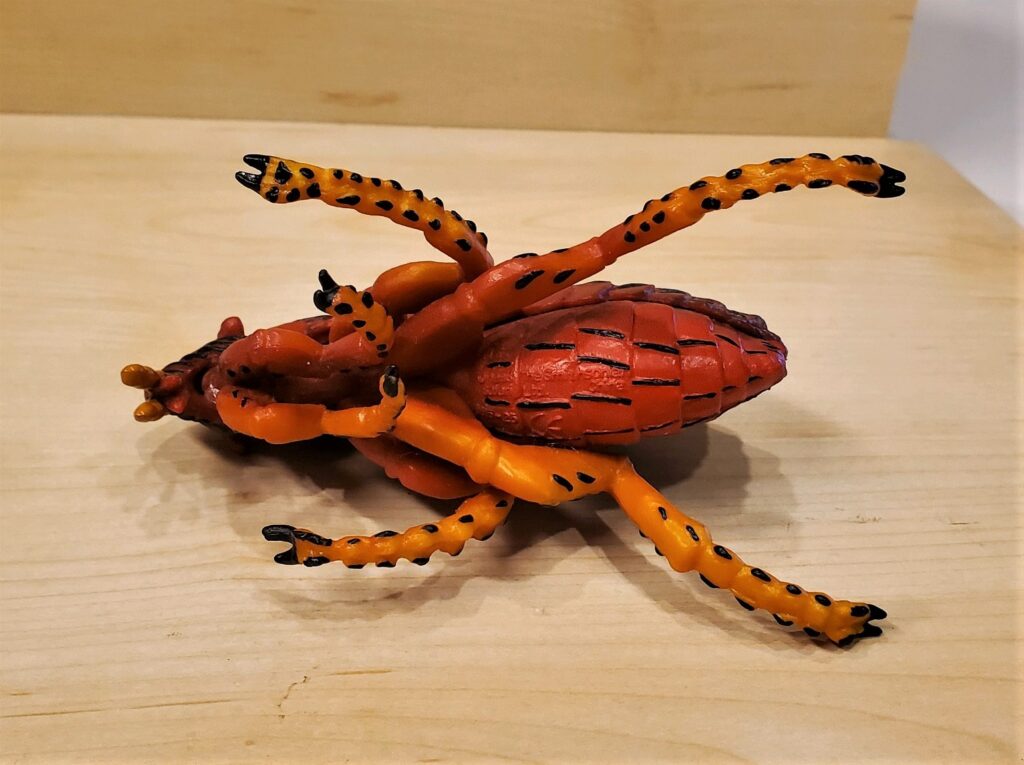
Disclaimer: links to Ebay and Amazon on the AnimalToyBlog are affiliate links, so we make a small commission if you use them. Thanks for supporting us!




Great review of a cool toy. I was aware of the Safari Smithsonian line but I didn’t know they made a flea. You wrote that it was made in 1988, do you mean 1998?
1998 yes, thanks for catching my typo!
Truly one of the most grotesque organisms to appear on the blog yet. My wife wouldn’t like it if I bought this for our kids.